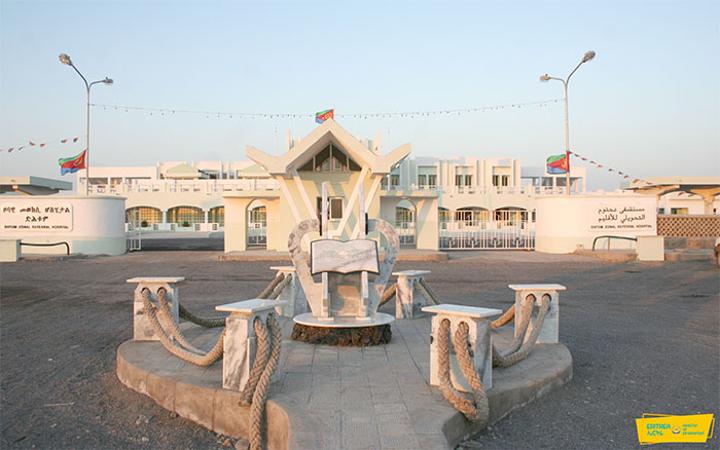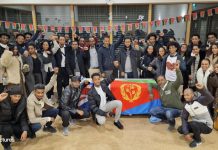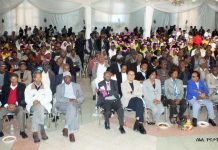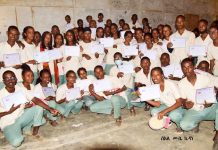Africa-Press – Eritrea. In the provision of nation-wide and affordable healthcare system, where it has proven to be a formidable task in many parts of the world, Eritrea has indeed been successful.
The provision of an adequate nationwide healthcare service following Eritrea’s independence was a significant challenge for the government of Eritrea, which inherited an inadequate healthcare system. If there were hospitals and clinics they were often located in urban centers. In the rural areas of Eritrea, they were almost non-existent. Over the last 30 years, however, the healthcare system of Eritrea has been transformed. This article focuses on the expanding healthcare service in the Southern Red Sea (SRS) region and its impact.
Relative to its vast size, the SRS region had very limited healthcare service in the past. In the whole region, there was only one hospital located in the port town of Assab and was built in 1958. There were also small health stations in the towns of Edi, Tio and Rahaita. But these healthcare facilities did not have the capacity to provide adequate healthcare services that meet the needs of the people of the region. The service that was provided was mostly limited to primary health care and patients had to travel long distances to get medical assistance. And whatever was available at the time was primarily intended to serve the settlers, not necessarily the local communities.
After Eritrea’s independence, the government made it its primary goal to develop the infrastructure in the SRS region that is suitable to give accessible healthcare service in the region. This was done in phases. In the first phase, the Ministry of Health (MoH) upgraded the existing healthcare facilities to a level that meets the requirements of the MoH. The facilities were improved in terms of infrastructure and personnel. For instance, in the Central Denkalia sub-zone, the health center in Edi was upgraded to a community hospital.
In the second phase, the task was to establish new healthcare facilities in remote places so that the communities can get healthcare service within a radius of 5-10 Km. For instance, the sub-zone of Araeta, which had no healthcare facility, now has three health stations located in the administrative areas of Ayumen, Egloli and Aytos. Similarly, new health stations have been opened in the administrative areas of Afambo and Bel-Ubey. In South Denkalia sub-zone, four health stations have been opened in Debay-Sima, Abbo, Beylul and Wade.
Overall, 16 healthcare service providers have been built in the SRS region, including a regional referral hospital and two community hospitals. To make the newly built facilities accessible communities that led nomadic lifestyles were relocated. People no longer need to travel long distances and as a result have been able to save their hard-earned income that had been spent on travel.
Mr. Mohammed Anwar, director of the MOH’s branch in the sub-zone, said the healthcare facilities had to be upgraded completely to give adequate healthcare service. Today, the hospital in Assab is equipped with modern equipment and serves as a referral hospital for the region.
The task of training healthcare professionals was another significant challenge the government encountered immediately after Eritrea’s independence. To fill the gap that was created in the healthcare facilities, freedom fighters who had been trained during the struggle for independence and Eritrean healthcare workers who came back home following Eritrea’s liberation were assigned to work in healthcare facilities. In the years that followed, the gap was narrowed down further when graduates from the University of Asmara and later on from the College of Health Sciences were assigned to the SRS region. Mr. Mohammed said that currently there is no shortage of healthcare professionals in the region.
Generally, the awareness raising campaigns that are regularly conducted by healthcare professionals as part of the MoH’s community-based prevention and intervention strategy has induced behavioral changes in communities. Prior to Eritrea’s independence, due to the poor communications and transportation infrastructure in the SRS region, 80 percent of all deliveries had to take place at home with the assistance of a traditional midwife, without the assistance of a nurse or physician. The percentage of deliveries at healthcare facilities in the region has increased from zero to 45 percent although it is still the lowest compared to the other regions. This has helped reduce the maternal and child mortality rates in the SRS region, which is a big achievement considering the challenges that had existed in the region.
A significant number of the people in the SRS region lead a nomadic lifestyle in scattered settlements in a region that has a total land area of 25 thousand square KM. This, coupled with the hot climate of the region, makes it difficult for people to travel long distances to get medical aid. To counter the challenge, the MoH deploys foot medics to conduct regular vaccination programs and give prenatal and antenatal care.
This article is a compiled version of a piece by Andom Ghirmai published on Hadas Ertra Newspaper on 20 January 2022.
For More News And Analysis About Eritrea Follow Africa-Press







